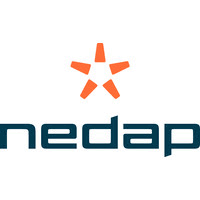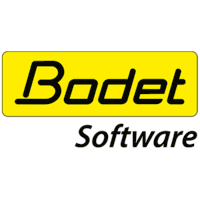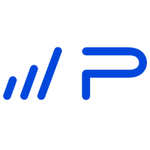Top Access Control Systems Softwares
Access Control Systems software plays a critical role in maintaining security by regulating who can enter or exit particular areas within a facility. These systems use a combination of hardware and software to ensure only authorized personnel gain access to restricted zones. Through detailed logging, real-time monitoring, and customizable permission settings, organizations enhance their security m... Read More
62 companies found
Johnson Controls
Product Description
Johnson Controls offers a range of innovative software solutions designed to help businesses enhance efficiency and achieve seamless operations. Our software is tailored to meet the diverse needs of various industries, providing practical tools for managing and optimizing a wide array of building systems. These include everything from energy management to security and facility management. Our pri... Read More
Users
- • No Data
Industries
- • No Data
Market Segment
- • No Data
Product Description
Verkada offers an innovative approach to security management that integrates seamlessly with a variety of environments, from small businesses to large institutions. At its core, Verkada combines cutting-edge hardware with intuitive, user-friendly software, making it easier for organizations to monitor and manage their security systems from anywhere. If you are a business owner or facility manager... Read More
Users
- • No Data
Industries
- • No Data
Market Segment
- • No Data
Product Description
Nedap is a company that specializes in creating software solutions designed to help businesses operate more smoothly and efficiently. Their software is trusted by organizations across various sectors because it’s designed to address real-world challenges that many companies face on a daily basis. Nedap’s portfolio includes tools that make it easier to manage tasks like employee scheduling and vis... Read More
Users
- • No Data
Industries
- • No Data
Market Segment
- • No Data
Product Description
Bodet Software specializes in developing efficient, user-friendly solutions designed to streamline and enhance everyday business operations. For over 150 years, Bodet has built a reputation for reliability and innovation, serving organizations of all sizes across various industries. Our software offerings focus on key areas like time and attendance, access control, and human resource management, m... Read More
Users
- • No Data
Industries
- • No Data
Market Segment
- • No Data
Product Description
Openpath is a modern security solution designed to simplify the way businesses manage building access. Ideal for both large enterprises and growing startups, Openpath offers a cloud-based system that allows administrators to oversee and regulate who can enter their premises with ease. The software integrates seamlessly with everyday digital devices, meaning employees and team members can use their... Read More
Users
- • No Data
Industries
- • No Data
Market Segment
- • No Data
Product Description
In today's fast-paced world, staying compliant and keeping data secure are top priorities for any business, especially when it comes to email communication. Paubox helps companies tackle this challenge by offering a straightforward, HIPAA-compliant email solution that ensures sensitive information is always protected. Paubox understands that businesses need secure communication without sacrifici... Read More
Users
- • No Data
Industries
- • No Data
Market Segment
- • No Data
Product Description
Salto is designed to simplify how businesses manage and optimize their software applications. If you've ever struggled with keeping track of settings, configurations, or workflows across multiple tools, Salto aims to streamline that process. It brings everything into one place, making it easier for teams to oversee and adjust their software setups. With Salto, companies can edit and review their ... Read More
Users
- • No Data
Industries
- • No Data
Market Segment
- • No Data
Product Description
Kisi is a modern and straightforward solution designed to simplify access control for businesses. Whether you're managing a small office or a sprawling enterprise, Kisi provides an easy-to-use system that allows you to manage who gets in and out of your spaces with just a few clicks. By using a cloud-based approach, Kisi eliminates the need for traditional keys and physical access cards, giving ad... Read More
Users
- • No Data
Industries
- • No Data
Market Segment
- • No Data
Product Description
OpenKey is a convenient software that aims to streamline hotel operations and enhance the guest experience by replacing traditional keycards with mobile keys. When guests check in, they can access their room directly from their smartphones, adding an extra layer of convenience to their stay. The software integrates seamlessly with existing hotel systems, making the transition smooth for hotels o... Read More
Users
- • No Data
Industries
- • No Data
Market Segment
- • No Data
ButterflyMX
Product Description
ButterflyMX is designed to make property access simple and convenient. Built with both residents and property managers in mind, this software offers a streamlined way to manage building entry. Whether you have a single property or multiple locations, ButterflyMX allows you to monitor and control access from anywhere using your smartphone or computer. Imagine you’re away from your desk, on vacati... Read More
Users
- • No Data
Industries
- • No Data
Market Segment
- • No Data
What is Access Control Systems software used for?
Access Control Systems software is a vital component for managing and securing access to physical or digital resources within an organization. By regulating who can enter or utilize certain areas or data, this software enhances security and ensures compliance with policy and regulatory requirements.
Physical Security Management
One of the primary uses of Access Control Systems software is managing physical security. This involves overseeing entry and exit points in facilities such as buildings, offices, or secured areas. The software allows administrators to define who can access specific locations and control entry using credentials like keycards, biometric scans, or PIN codes. This ensures that only authorized personnel can enter restricted areas, minimizing the risk of security breaches.
Digital Access Control
Access Control Systems software extends beyond physical spaces to digital environments. It enables organizations to manage access to sensitive data, applications, or systems, ensuring that only authorized users can view or manipulate critical information. By implementing this software, businesses can enforce stringent access protocols, protecting digital assets from unauthorized access or potential data breaches.
Centralized Management
Centralized control is another notable use of Access Control Systems software. Organizations can manage multiple access points within their facilities from a single interface. This central management capability allows for streamlined operations, where policies can be enforced uniformly across various locations or departments. It also facilitates real-time monitoring and reporting, allowing for quick response to any unauthorized access attempts.
Enhancing Operational Efficiency
Access Control Systems software aids operational efficiency by automating many security processes. Automation can include scheduling access permissions based on time or roles, automatic logging of access events, and seamless integration with other business systems. By reducing manual intervention, organizations can maintain stringent security protocols without impeding daily operations or productivity.
Compliance and Audit Support
Organizations in many sectors are required to comply with industry-specific regulations regarding access control. Access Control Systems software helps ensure compliance by enabling detailed audit trails and access logs. These logs can be crucial for demonstrating adherence to regulations during audits, offering transparency, and reducing the liability associated with unauthorized access.
Risk Mitigation
The use of Access Control Systems software is crucial for mitigating various risks associated with unauthorized access. By implementing robust access control protocols, organizations can minimize potential threats such as theft, vandalism, or data breaches. The software provides preventative measures by enforcing strict access criteria and ensuring only designated personnel can access specific resources.
In summary, Access Control Systems software serves as an essential tool for any organization looking to enhance security, maintain compliance, and improve operational efficiency. It allows for effective management of both physical and digital access, ensuring that only authorized individuals can reach sensitive areas or information, thereby safeguarding organizational assets and data integrity.
How does Access Control Systems software enhance security?
Access Control Systems software plays a crucial role in modern security protocols by regulating who can enter or exit certain areas, ensuring that only authorized individuals gain access. This software is essential for businesses, government facilities, educational institutions, and residential complexes to maintain a secure environment.
Authorization and Authentication
Access Control Systems software enhances security by providing robust authorization and authentication mechanisms. The software identifies individuals through credentials such as passwords, biometric scans, or access cards. By verifying these credentials, the system ensures that only authorized personnel can access restricted areas. This minimizes the risk of unauthorized entries, protecting sensitive information and assets.
Real-time Monitoring and Alerts
With the utilization of Access Control Systems software, security teams can monitor access points in real-time. This feature allows for immediate identification of suspicious activities. The software generates alerts whenever there are attempts to breach security protocols, enabling swift responses to potential threats. These real-time capabilities ensure that any security incidents are addressed promptly, reducing the potential for damage.
Integration with Security Systems
Access Control Systems software often integrates with other security systems such as CCTV cameras and alarm systems. This integration enhances security by providing a comprehensive overview of the environment. When combined, these systems offer a layered security approach that can quickly identify and respond to unauthorized access attempts. Such integrations enable seamless communication between systems, improving overall security management.
Audit Trails and Reporting
One significant advantage of Access Control Systems software is its ability to maintain detailed audit trails and generate reports. This capability provides valuable insights into access patterns and trends. By analyzing these reports, organizations can identify potential vulnerabilities and unauthorized access attempts. Having a detailed record allows for effective incident investigations, contributing to the refinement of security measures.
Scalability and Flexibility
Access Control Systems software is designed to be scalable and flexible, accommodating the changing needs of an organization. Whether a company is expanding its operations or implementing additional security layers, the software can easily adapt. This scalability ensures that security measures remain robust, even as the organization's requirements evolve. The ability to customize access levels and permissions allows for tailored security solutions, enhancing protection across different areas or user groups.
Minimizing Human Error
The automation provided by Access Control Systems software minimizes the potential for human error in security protocols. By reducing reliance on manual processes, the software ensures consistent application of security policies. Automated systems can also easily handle large volumes of access requests, maintaining efficiency while upholding security standards.
Enhanced Data Protection
Protecting digital data is as crucial as physical security, and Access Control Systems software plays an essential role in safeguarding sensitive information. By controlling who can access certain resources, the software reduces the risk of data breaches. Organizations can implement strict access controls for databases, servers, and other digital assets, ensuring that only authorized users can view or manipulate critical data.
Overall, Access Control Systems software is vital in enhancing security by controlling access to resources, providing real-time monitoring, integrating with other security solutions, and maintaining comprehensive records, all while reducing the risk of human error and safeguarding sensitive information.
What features should you look for in Access Control Systems software?
User Management
In Access Control Systems software, robust user management capabilities are essential. This includes the ability to add, remove, and update users swiftly. It should support various user roles and access levels, allowing administrators to tailor permissions according to organizational needs. Additionally, scalability is a crucial factor, as it ensures that the system can grow with your organization.
Authentication Mechanisms
A variety of authentication mechanisms enhance the security of Access Control Systems software. These can range from traditional password-based logins to more advanced options such as biometric authentication, smart cards, or Multi-Factor Authentication (MFA). These methods boost security, ensuring that only authorized personnel have access to restricted areas or information.
Access Scheduling
Access scheduling enables organizations to determine when users can access specific areas or systems. This feature is particularly beneficial for businesses with varying operational hours or special scheduling needs. By allowing precise control over access times, this functionality enhances security and ensures effective resource management.
Audit Logs and Reporting
Comprehensive audit logs and reporting functionalities in Access Control Systems software provide insight into access activities within the organization. They track who accessed what resources and when, offering a detailed overview that aids in security audits and compliance with regulations. These reports are crucial for identifying potential security breaches or suspicious behavior.
Integration Capabilities
Integration capabilities are significant for Access Control Systems software. The software should seamlessly integrate with existing infrastructure, including HR systems, building management systems, and security cameras. This ensures a cohesive system where data flows smoothly between different platforms, enhancing overall operational efficiency.
Remote Access
Remote access functionality allows administrators to manage the Access Control Systems software from any location. This provides flexibility and ensures that security protocols can be enforced even outside of normal working hours or from remote sites. The capability to respond quickly to security incidents or administrative requests is a notable advantage.
Scalability
The ability to scale is vital in Access Control Systems software, allowing for additions of new users or integration of new technologies as the organization grows. Look for solutions that support this expansion without a decrease in performance or reliability.
Customization Options
The software should offer customization options, allowing organizations to configure settings to best fit their unique security policies and operational needs. This includes setting specific protocols for different departments or functions, providing a tailored approach to access management.
User-Friendly Interface
An intuitive and user-friendly interface is critical for ensuring that Access Control Systems software is readily adopted by users. A clear dashboard with easy navigation helps in efficiently managing daily operations without the need for extensive training.
Maintenance and Support
Consider the maintenance and support offerings associated with any Access Control Systems software. Ongoing support ensures that the system remains up-to-date with the latest security features and is aligned with evolving compliance requirements. Choose software that includes accessible customer support to resolve issues promptly.
These features together ensure a robust Access Control Systems software that caters to both security and operational needs, providing comprehensive access management solutions.
How does Access Control Systems software manage user access?
Identification and Authentication
Access Control Systems software primarily begins managing user access through robust identification and authentication processes. Users must first identify themselves by providing unique credentials. These credentials can include usernames, ID cards, or biometrics. Authentication follows identification and confirms that the person attempting access is indeed who they claim to be. This can be achieved through passwords, PINs, or fingerprint scans.
Authorization
Once authentication is successful, Access Control Systems software proceeds to authorize the user. This involves validating whether the user has permissions to access the specific resource or area. The software checks against predefined roles and permissions. This role-based access control assigns specific access rights based on the role of the user within the organization.
Access Restrictions
The Access Control Systems software establishes different levels of access restrictions. This can involve setting physical controls to restrict entry to secure locations or implementing software controls to prevent unauthorized data access. Restrictions are enforced by the system autonomously, preventing users without proper permissions from reaching restricted areas or data sets.
Multi-Factor Authentication (MFA)
To enhance security, Access Control Systems software often incorporates Multi-Factor Authentication (MFA). By requiring multiple forms of verification, MFA reduces the likelihood of unauthorized access. This may include a combination of something the user knows (a password), something they have (a mobile device), and something they are (biometric verification).
Monitoring and Logging
Access Control Systems software continuously monitors user activity. It logs access attempts, successful entries, and any security breaches. These logs are crucial for auditing and provide valuable insights into the system's security posture. Monitoring allows administrators to detect any irregular patterns that might indicate security threats.
Time-Based Access
Certain Access Control Systems software also implements time-based access control. It grants access permissions based on specific time frames, allowing entry or data access only during designated times. This is instrumental in managing access for employees who work in shifts or during specific operational hours.
Dynamic Access Permissions
Access Control Systems software can dynamically adjust user permissions based on contextual factors. This dynamic access control creates a more flexible and adaptive security environment, considering elements like location, device used, or network environment when granting access.
User Access Reviews
Regular reviews and audits of user access are a critical component managed by Access Control Systems software. These reviews ensure that permissions remain relevant to the user’s current role. If a user’s role changes, the access control policies are updated to reflect the new status.
Integration and Scalability
Access Control Systems software often integrates with other organizational systems to streamline user management processes. Scalability ensures the system can grow with the organization, accommodating more users, locations, and resources as needed. This integration facilitates a unified approach to user access management across various platforms and systems.
In conclusion, Access Control Systems software employs a comprehensive approach to manage user access by combining identification, authentication, authorization, monitoring, and dynamic permissions. It ensures that only legitimate users can access required resources, maintaining organization security and efficiency.
Can Access Control Systems software be integrated with other security solutions?
Access Control Systems software is designed to streamline the management of physical and digital access to various resources, whether that involves entry to physical buildings or securing digital assets. A significant feature of Access Control Systems software is its ability to integrate with other security solutions, creating a comprehensive security framework that enhances protection and reduces complexity.
Enhanced Security Through Integration
Integrating Access Control Systems software with other security technologies helps in creating a consolidated security infrastructure. For instance, it can be integrated with video surveillance systems to enable real-time monitoring. This integration allows simultaneous video verification whenever access is requested or triggered. It not only strengthens security protocols but also helps in maintaining detailed activity logs that can be reviewed for security audits.
Streamlined Operations
Integration allows various security systems to work in tandem without the need for separate operations of each system. This streamlining simplifies management and reduces the potential for human error. For example, integrating with visitor management systems automates visitor logging and credentials issuance, enhancing both security and efficiency in tracking who is on the premises at any given time.
Response and Alerts
When Access Control Systems software is integrated with alarm systems, it can initiate immediate responses if an unauthorized access attempt is detected. This integration ensures that alerts are synchronized, and facilities managers can respond quickly to security breaches, reducing the time between incident detection and response.
Data Sharing and Analysis
Integration facilitates the creation of a centralized database, where data from access control and other security measures are stored and analyzed collectively. This data can provide insights into access patterns and potential security vulnerabilities, enabling organizations to anticipate and mitigate risks preemptively. Furthermore, analysis of this aggregated data helps in compliance reporting and risk management, providing actionable intelligence to decision-makers.
Simplifying Identity and Access Management
By integrating Access Control Systems software with identity management solutions, organizations can unify credential issuance, monitoring, and revocation processes. This simplification reduces administrative overhead and helps ensure that only authorized personnel have access to sensitive areas, thus aligning with overarching identity and access management strategies.
IoT and Smart Building Integration
Access Control Systems software can also be integrated with IoT devices and smart building systems. This integration supports the automation of various building management processes, such as lighting controls and climate regulation, based on access events. This automation not only enhances security but also contributes to energy efficiency.
Compliance and Audit Readiness
Integration across security solutions ensures that compliance requirements for industries such as healthcare, finance, and government can be met more easily. Centralized control and monitoring help maintain an audit-ready posture, with thorough, accurate records of access events and security incidents.
Flexibility and Scalability
The modular nature of Access Control Systems software allows it to expand alongside the organization’s growth, accommodating additional security solutions with ease. This scalability ensures that the integration remains relevant and effective, adapting to evolving security needs without significant disruption or reconfiguration.
In conclusion, Access Control Systems software's ability to integrate with a wide range of other security solutions not only enhances security postures but also streamlines operations and compliance efforts. This integration capability is a crucial factor for organizations aiming to maintain a robust and dynamic security environment.
What is the cost range for Access Control Systems software?
Access Control Systems software encompasses a vital component in the security infrastructure of many organizations. This software plays a crucial role in managing the permissions and monitoring the access of users to physical or virtual environments. When investing in Access Control Systems software, one of the primary considerations is the cost involved. Prices for this category of software can vary widely based on factors such as deployment type, scale, and the particular features provided.
Factors Influencing Cost
Deployment Type
There are generally two types of deployments when it comes to Access Control Systems software: cloud-based and on-premises. Cloud-based solutions often come with a subscription model where costs might range from $20 to $100 per month for small to medium-sized businesses. In contrast, on-premises solutions involve a one-time purchase cost, potentially ranging from $500 to $5,000, depending on the scale and complexity of the system.
Scale and Number of Users
The cost of Access Control Systems software is also determined by the number of users or the scale of deployment. Small businesses with fewer users may find entry-level systems at lower prices, often around $100 to $1,000. For larger organizations, costs can rise significantly due to the need for additional licenses and advanced features, with prices ranging from $5,000 to $20,000 or more.
Features and Functionality
While Access Control Systems software essentially serves a similar purpose, the diversity of features available can significantly influence cost. Standard features may include basic access management and incident logging. Systems offering advanced capabilities such as biometric security, real-time monitoring, detailed analytics, and AI-based threat detection can command premiums. Consequently, costs for high-end solutions with comprehensive feature sets can range from $10,000 to $50,000 or higher for enterprise-grade deployments.
Subscription vs. Perpetual Licensing
When discussing Access Control Systems software, one must consider the financial implications of subscription versus perpetual licensing. Subscription-based solutions might seem less costly in the short term with monthly fees, which cumulatively can match or exceed the upfront cost of perpetual licenses over time. Perpetual licenses involve higher initial expenditures but carry potential long-term savings if the system meets organizational needs for extended periods without additional ongoing costs.
Additional Costs
In many instances, the initial purchase or subscription cost of Access Control Systems software may not be the only financial consideration. Organizations might encounter additional expenses such as installation fees, hardware costs, regular maintenance, and training for users or IT personnel. These supplementary costs can range from $500 to $5,000, depending on the complexity and size of the system.
Market Trends
The market for Access Control Systems software is evolving with technological advances, influencing price dynamics in the sector. Increasing demand for mobile access options and integrations with IoT devices can impact pricing strategies as vendors offer more unique, tailored solutions to meet these changing needs.
Understanding the cost range for Access Control Systems software enables organizations to effectively budget and plan for their security infrastructure needs, aligning the choice of software with both current requirements and anticipated growth.
How does cloud-based Access Control Systems software differ from on-premise solutions?
When examining Access Control Systems software, it is instrumental to understand the distinctions between cloud-based and on-premise solutions. These differences can impact security, scalability, cost, and maintenance, playing a crucial role in determining which type best fits an organization's needs.
Deployment and Infrastructure
Cloud-based Access Control Systems software is hosted on remote servers managed by third-party providers. This eliminates the need for physical hardware and reduces the requirement of IT infrastructure on-site. Organizations access the system via the internet, ensuring scalability and ease of access from various locations. Conversely, on-premise solutions require dedicated hardware and software installations within the company’s premises. This setup demands upfront investments in infrastructure and hardware, often resulting in higher initial costs.
Scalability and Flexibility
Cloud-based systems offer exceptional scalability, adapting to the evolving needs of a business without the need for significant investments in additional hardware. This flexibility enables businesses to swiftly add or reduce users and features as required, accommodating growth and changes in security demands. On-premise Access Control Systems software, however, may require significant time and financial resources to scale, often necessitating additional hardware installations and manual reconfigurations.
Cost Structure
The cost implications between cloud-based and on-premise solutions are notable. Cloud-based Access Control Systems software providers typically utilize a subscription-based pricing model, spreading costs over time and reducing the financial burden associated with initial setup and ongoing maintenance. In contrast, on-premise solutions often involve substantive upfront expenses for software, hardware, and installation, alongside ongoing maintenance and upgrade costs.
Maintenance and Updates
In cloud-based Access Control Systems software, providers handle maintenance, updates, and security features. Regular updates ensure that the systems stay current with the latest security protocols and functionalities. This reduces the technical demands on internal IT teams. On the contrary, maintaining and updating on-premise systems falls upon the organization, demanding dedicated IT resources and potentially leading to system vulnerabilities if updates are not timely.
Accessibility and Remote Management
Cloud-based Access Control Systems software facilitates access from any location with an internet connection. This is particularly advantageous for businesses with multiple locations or remote-working policies, granting administrators the ability to control access settings and monitor security remotely. On-premise solutions generally offer limited remote access, as they rely on the local network infrastructure, which may not easily support remote modifications without additional configurations.
Security and Compliance
Security can be perceived differently based on the solution type. Cloud-based solutions may raise concerns over data privacy, as information is stored remotely. However, established cloud providers typically implement robust security measures, including encryption and regular security audits, to safeguard data. On-premise Access Control Systems software offers direct control over data and security protocols, aligning with organizations preferring hands-on management. However, this can also mean the burden of regularly updating and securing systems falls solely on the organization.
In conclusion, the choice between cloud-based and on-premise Access Control Systems software is influenced by organizational needs, budget, infrastructure, and security preferences. Each solution offers distinct advantages and challenges that must be carefully evaluated against the specific requirements and resources of a business.









